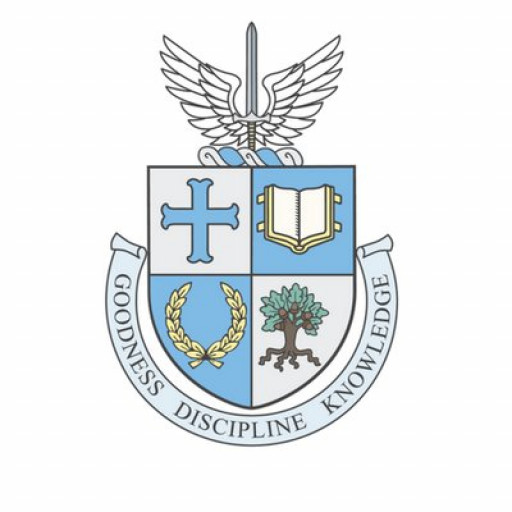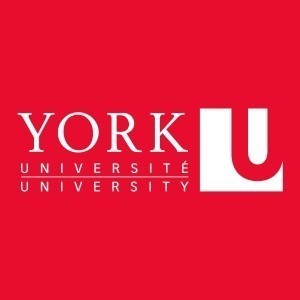Photos of university / #umontreal
The History of Art program at the University of Montreal offers students a comprehensive exploration of the visual arts from ancient times to the modern era. This interdisciplinary program provides a deep understanding of art history, incorporating cultural, social, political, and technological contexts that have influenced artistic production throughout history. Students will examine a wide array of art forms, including painting, sculpture, architecture, decorative arts, and contemporary multimedia works, gaining critical skills to analyze and interpret visual culture across different periods and regions. The program emphasizes both theoretical and practical approaches, encouraging students to develop their research skills and engage in detailed visual analysis. With courses designed by leading scholars in the field, students will explore significant art movements, influential artists, and pivotal historical events that have shaped the evolution of art. The curriculum also includes opportunities for field visits, exhibitions, and internships to enhance practical understanding and foster connections within the cultural sector. Graduates of the program will be well-equipped for careers in art curation, museum management, art criticism, historical research, conservation, and education. The program is suitable for those passionate about understanding the cultural and historical significance of visual arts, as well as for individuals seeking to develop a critical eye and scholarly abilities in art history. With a strong foundation in research methodologies and a global perspective, students will be prepared for dynamic careers in arts organizations, academia, and cultural heritage sectors. The University of Montreal’s commitment to academic excellence and innovative teaching methods ensures that students receive a thorough and engaging education in the history of art, fostering lifelong appreciation and analytical skills essential for contributing to the preservation and interpretation of our artistic heritage.
The History of Art program at the University of Montreal offers a comprehensive and in-depth exploration of the development of visual arts across different periods, cultures, and regions. This interdisciplinary program is designed to provide students with a solid foundation in understanding the historical context, stylistic evolution, and cultural significance of artworks from antiquity to contemporary times. Students will examine a wide range of artistic expressions, including painting, sculpture, architecture, decorative arts, and digital media, gaining insights into how art reflects and shapes societies throughout history.
Throughout the program, students will engage with critical methodologies and theoretical frameworks that underpin art historical research. They will learn to analyze artworks critically, interpret their meanings, and appreciate their aesthetic and cultural values. The curriculum includes courses on ancient civilizations, classical art, medieval to modern European art, Asian and indigenous art traditions, and contemporary art movements. Emphasis is placed on developing skills in visual analysis, historical research, and scholarly writing, preparing students for careers in museums, galleries, cultural institutions, education, or further academic study.
The program encourages active engagement through seminars, workshops, and trips to museums and archaeological sites, providing practical experience and a closer connection to the material culture of different eras. Students also have opportunities to undertake research projects, intern at cultural organizations, and participate in conferences, fostering professional development and networking within the art history community. With experienced faculty members specializing in diverse areas of art history, students receive personalized guidance and mentorship to refine their scholarly interests and career goals.
Graduates of the History of Art program will possess a rich understanding of the artistic heritage of humanity, critical thinking skills, and the ability to analyze visual culture in its historical and contemporary contexts. This program prepares students not only for careers directly related to art historical fields but also for roles in education, curation, journalism, cultural management, and beyond. Whether you are passionate about uncovering the stories behind artworks or exploring the impact of visual culture on society, this program provides the tools and knowledge necessary to pursue a meaningful and intellectually stimulating career in the arts.
The history of art bachelor's degree program at the University of Montreal requires students to complete a comprehensive curriculum designed to provide a broad understanding of visual arts from ancient times to contemporary periods. Students must successfully complete a series of core courses in art history, including introductory classes that cover the basic principles of artistic movements, styles, and techniques, as well as specialized seminars focusing on specific periods, regions, or thematic topics. The program emphasizes developing critical analysis skills, enabling students to interpret artworks within historical, cultural, and socio-political contexts.
In addition to core coursework, students are encouraged to participate in practical training and workshops that enhance their understanding of art criticism, curation, and conservation methods. The program often includes mandatory research projects, essays, and presentations that require students to engage deeply with primary and secondary sources, fostering academic writing and verbal communication skills. Language proficiency in French and English is typically required, given the bilingual context of the university and the importance of access to a wide range of scholarly materials.
To graduate, students usually need to complete a minimum of 120 credits, including general education requirements, major courses in art history, and elective courses. Internships or fieldwork in museums, galleries, or cultural institutions are highly recommended and sometimes mandated as part of the curriculum to give students practical experience. The program aims to prepare graduates for careers in museums, art galleries, academia, or further study in graduate programs. Throughout their studies, students benefit from accessing the university's extensive library resources and participating in lecture series, exhibitions, and cultural events organized by the university community.
The financing studies for the History of Art program at the University of Montreal encompass a variety of funding options designed to support students throughout their academic journey. Undergraduate students may benefit from government financial aid programs such as the Quebec Student Assistance Program (Aide financière aux études), which provides loans and bursaries based on financial need. Additionally, the university offers merit-based scholarships aimed at recognizing academic excellence, which can significantly reduce the financial burden for high-achieving students. These scholarships are often competitive and require students to maintain certain academic standards. Graduate students pursuing advanced research may have access to specialized research grants, fellowships, and teaching assistantships, which not only provide financial support but also valuable professional experience. The university encourages students to seek external funding sources as well, including provincial, national, and international scholarships, as well as private foundations and organizations that support arts and humanities studies. Students are advised to contact the university’s financial aid office and the department’s financial support services for tailored advice and assistance regarding available funding opportunities. Additionally, many students combine part-time work opportunities within the university, such as research projects or administrative roles, to supplement their income. The university also provides guidance on crowdfunding campaigns and sponsorships in case students seek alternative financing options. Overall, the financing landscape for students in the History of Art program is diverse, combining government aid, institutional scholarships, research grants, external scholarships, work opportunities, and personal funds to ensure that students have access to the necessary resources to successfully complete their studies.
The History of Art program at the University of Montreal offers students a comprehensive exploration of visual culture from ancient times to contemporary art. This program aims to develop a deep understanding of the evolution of artistic styles, movements, and techniques across different historical periods and geographic regions. Students gain critical skills in analyzing artworks, understanding cultural contexts, and engaging with historical narratives through various methodologies, including visual analysis, archival research, and theoretical frameworks. The curriculum integrates courses in painting, sculpture, architecture, decorative arts, and new media, providing a multidisciplinary approach to art history. Students also have opportunities to study diverse cultural influences and to examine the social, political, and economic factors that have shaped artistic production through the ages. The program encourages active participation in internships, research projects, and exhibitions, fostering practical experience alongside academic knowledge. Graduates of the program are prepared for careers in museums, galleries, cultural institutions, education, conservation, archiving, and further academic research. The department is distinguished by its faculty’s expertise in various specializations, including medieval art, Renaissance art, modern art movements, and contemporary visual culture. The program often features guest lectures, conferences, and collaborative projects with other departments and institutions, enriching the learning environment. Furthermore, the University of Montreal’s location provides students with access to significant heritage sites, art collections, and cultural resources, enhancing experiential learning. Overall, the History of Art program combines rigorous academic training with cultural engagement, equipping students to critically analyze and interpret the visual world and to contribute to the preservation and dissemination of artistic heritage.



